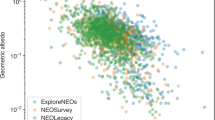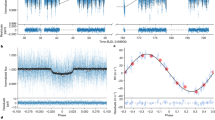Abstract
READING Sir James Jeans's most interesting and informative lecture at the Royal Institution (see NATURE, May 3, p. 526), one is, I think, brought up short by the following statement “The greater part of both atmospheres [of Jupiter and Saturn] will be at a pressure of more than a million terrestrial atmospheres. Under such pressures, no known substance remains gaseous.” This latter statement is so far contrary to what I, in common no doubt with most chemists, have been taught “from my youth up”, that I cannot believe it represents Sir James's considered opinion.
This is a preview of subscription content, access via your institution
Access options
Subscribe to this journal
Receive 51 print issues and online access
$199.00 per year
only $3.90 per issue
Buy this article
- Purchase on Springer Link
- Instant access to full article PDF
Prices may be subject to local taxes which are calculated during checkout
Similar content being viewed by others
Author information
Authors and Affiliations
Rights and permissions
About this article
Cite this article
PHELPS, J. “The Physical Condition of the Planets”. Nature 147, 746–747 (1941). https://doi.org/10.1038/147746b0
Issue Date:
DOI: https://doi.org/10.1038/147746b0
Comments
By submitting a comment you agree to abide by our Terms and Community Guidelines. If you find something abusive or that does not comply with our terms or guidelines please flag it as inappropriate.



